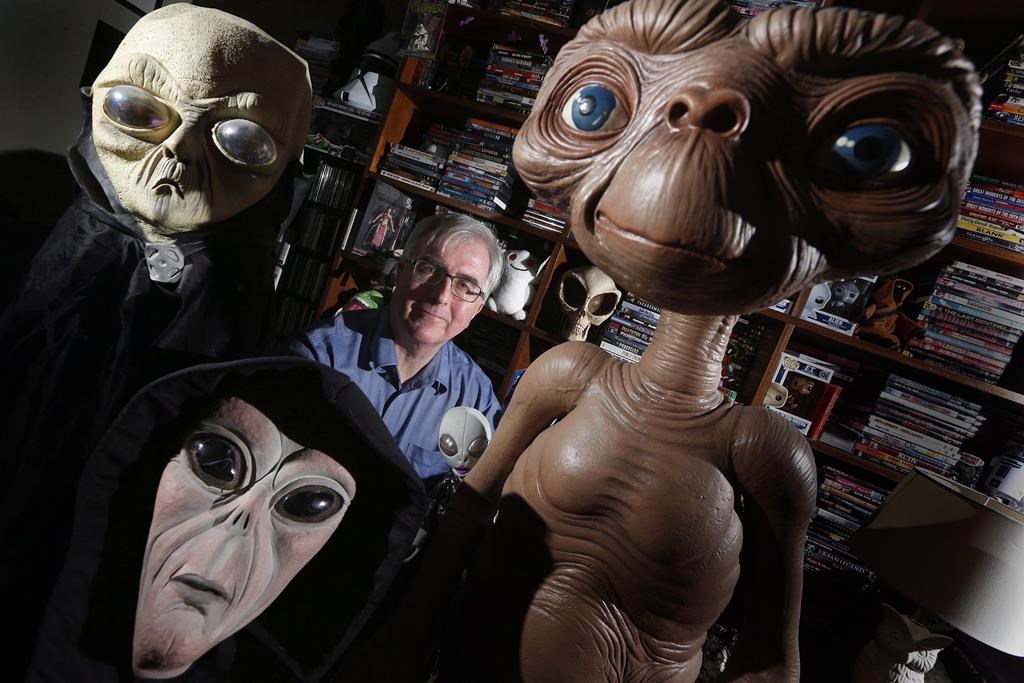Recent congressional hearings in the United States about the existence of’ “unexplained aerial phenomena” — more commonly known as unidentified flying objects — have sparked an increased interest in UFOs around the world.

For Winnipegger Chris Rutkowski, a fascination with unexplained objects in the sky is nothing new. Rutkowski, a science writer and UFO researcher, is one of Canada’s foremost ufologists.
While UFOs have been making headlines, he says, there’s still a lot of mystery around the topic — which might be part of the appeal.
“There’s a lot of public interest right now with regard to UFOs, everything from people wanting to know what’s the real truth to what’s Canada’s role and whether there are any other sightings around the world,” Rutkowski told Global Winnipeg.
“It’s really quite fascinating to see how many people are interested in UFOs right now. We still don’t know anything. … The whistleblowers have come forward and said the government is covering stuff up and there are crashed saucers and maybe little crashed bodies or something like that, but the Pentagon still says they haven’t found any verifiable evidence.”
For UFO aficionados, the U.S. hearings are just the tip of the iceberg, as there are countless stories of sightings to pore over — including some right here in Manitoba like the famous 1967 Falcon Lake incident — as well as official documentation of unexplained objects from Transport Canada and elsewhere.

Get breaking National news
“I think if you’ve seen a UFO, you’re in good company,” Rutkowski said.
“Polls have shown that one-in-10 North Americans — including Canada — believe they’ve seen UFOs. This includes RCMP officers, pilots, and air traffic control officers.
“It’s not something that should be stigmatized, but there’s still a reluctance.”

For those looking for an out-of-this-world experience that has more concrete facts behind it, the August skies over Manitoba are expected to be very active in the coming weeks, headlined by a meteor shower on Saturday.
“Hopefully we have some clear skies and you can get to see beautiful streaks of light, anywhere from 50 t0 60 or so meteors per hour,” said Rhianna Cohen with the University of Manitoba’s Lockhart Planetarium.
“This one, in particular, is caused by the Swift Tuttle comet, which orbits around the sun once every 133 years or so. When it gets close to the sun — because it’s like a giant dirty snowball, it’s made up of ice and dust — it melts just a little bit, and it leaves behind a trail of debris.”
Your best chance at catching sight of the cosmic display, Cohen said, is by getting away from city lights, with locations like Birds Hill Park likely to have a clear view.
Manitobans can also watch the skies for some lunar sightseeing in August.
“We also have two full moons this month. That’s called a blue moon, and they’re both supermoons, and that means they’re larger in the sky.”
The first supermoon was visible Aug. 1, with another expected near the end of the month, on Aug. 30.







Comments